
9 Incredible Animals on Earth
Nature is wondrous. Every time we learn about it, discover something new or get familiar with something already existing, we sure cannot help but stand in awe at its greatness as well as its diversity.
We can think of nature as every living being around us. This includes animals, trees, rivers, oceans, fish, and all species living underwater, birds, insects, and many others. All these species are incredibly different. That is why scientists classified them into six different kingdoms. We seem to be more familiar with two of these kingdoms: Animalia and Plantae, the animals and plants kingdoms.
Each of these two kingdoms is full of hundreds and hundreds of species that belong to different families and classes. Each species has diverse characteristics that set it apart from other species. That is why every species is unique.
For example, some animals are covered with thick fur, long heavy feathers, or short fluffy colored hair. Some animals live in groups, in packs, or on rafts while others prefer to be on their own. Some animals are gigantic like elephants and others are very teeny-tiny like ants.
Today we are talking to you about some super animals from different species. These animals are distinct by their very nature. Their body structure is as complicated as it is wondrous. Though some might look small, very small, but they comprise great powers that humans can even match.
So let’s discuss them one by one.
The top three smallest animals on Earth
Size is one easy characteristic we can use to distinguish animals from one another. For example, we can easily spot that a Siamese cat is smaller in size than a Golden Retriever or that an eagle is much bigger than a cute little yellow canary. Can you think of the smallest animal you have ever seen or read about? How small was it? Was it the size of your palm, for instance?
Well, here are the top smallest animals on the planet.
(1) Bee Hummingbird

A bee hummingbird is that lovely colorful bird that is the smallest ever found on Earth. It is only found in Cuba in Latin America and nowhere else in the world. A female hummingbird is different in size from a male. For instance, females usually weigh 2.6 g and are 6.4 cm in length while males are way tinier. They are only 1.95 g and 5.5 cm long.
Both males and females are also different in colors. But they are still captivating as well. A male bee hummingbird has a redhead, blue back, and light gray underparts while females are bluish-green with pale gray underparts. That makes it easy to set them apart. Both males and females have luminous feathers that change colors when viewing them from different angles.
To eat, bee hummingbirds usually use their very thin, long beak, which can be as long as 2 cm, to probe deep into flowers. Since they feed on the sugary fluid called nectar found in flowers, they use their long beak to suck it up.
A bee hummingbird also plays a very important role in nature. In fact, it helps flowers reproduce since they are very far from each other. But how does a bee hummingbird do that? Well, when a bee hummingbird visits one flower to eat, it carries with it pollen from that flower on its head and beak. Pollen is a yellow powder produced by flowers to help them have baby flowers. So when the hummingbird visits another flower, it drops this pollen into the new flower, allowing it to reproduce.
Some fun fact about such birds is that they are hyperactive. They can beat their wings from 80 to 200 times per second. This unimaginable beating helps the bird to stay still in the air while it is feeding on flowers.
In addition, due to such a high beating speed as well as being incredibly lightweight, bee hummingbirds can fly very fast. Their flying speed can reach 48 km/h at maximum. Interestingly, they can also fly up and down, upside down, and even backward.
While the human heart beats 70-80 beats per minute, the bee hummingbird heart beats at a rate of 1,260 beats/minute. This allows the bird to take around 250 breaths each minute while humans can only take 20 breaths at maximum per minute.
Though they are the smallest birds on Earth, they are incredibly super and can live from 7 to 10 years.
(2) Speckled Tortoise
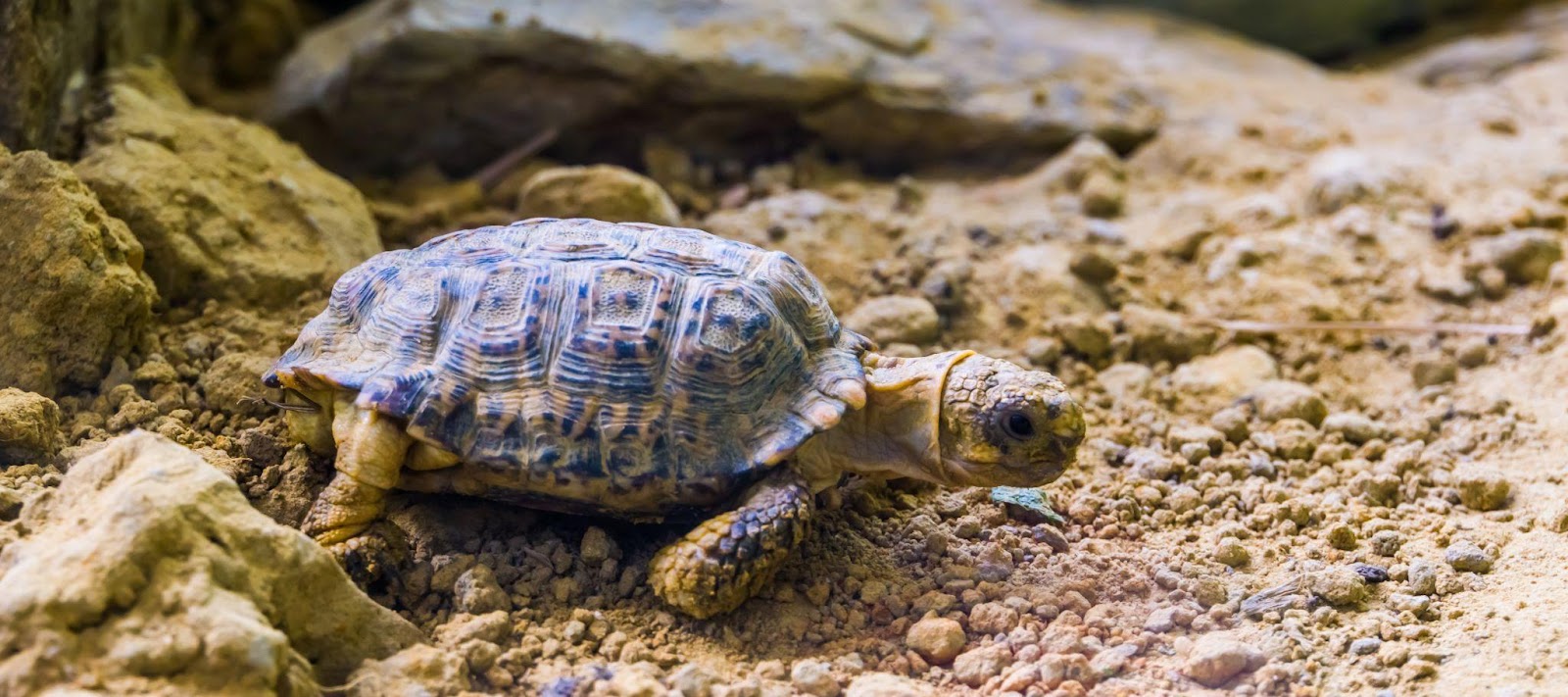
Scientifically speaking, speckled tortoises are called chersobius signatus. But since this is a lot harder to pronounce, the entire world has agreed to call them speckled tortoises. A speckled tortoise is the smallest tortoise ever found on Earth. It is so small; that you can hold it between your index finger and thumb. The adult tortoise can fit in your palm.
Again, males and females are different in size. Males are just 6-8 cm long while females can be longer. They can reach a length of up to 10 cm. Speckled tortoises weigh only 95-165 g. That is even way lighter than a Starbucks cappuccino!
Such a tiny tortoise has a flattened shell that is part orange part brown with many many dark speckles on that shell. Interestingly, it has five toes on each foot while other tortoises from the same family have only four toes per foot. Also, when two tortoises like each other, they show this love by nodding heads against one another.
Mornings are the preferable time of day for speckled tortoises where they are usually very active. They go around looking for food which is often leaves, flowers, grasses, and other various plants.
Typically, they stay active during spring and fall. But in warm summers and cold winters, they tend to be rather lazy and they eat less too. Sometimes they stop eating altogether.
Tiny speckled tortoises are originally from South Africa but you can find them all over the world now. Many people like to take them as pets. However, taking them out of their natural environment to sell them highly threatens the speckled tortoises especially since many people do not properly take care of them so they end up dead.
(3) Rusty-spotted Cat
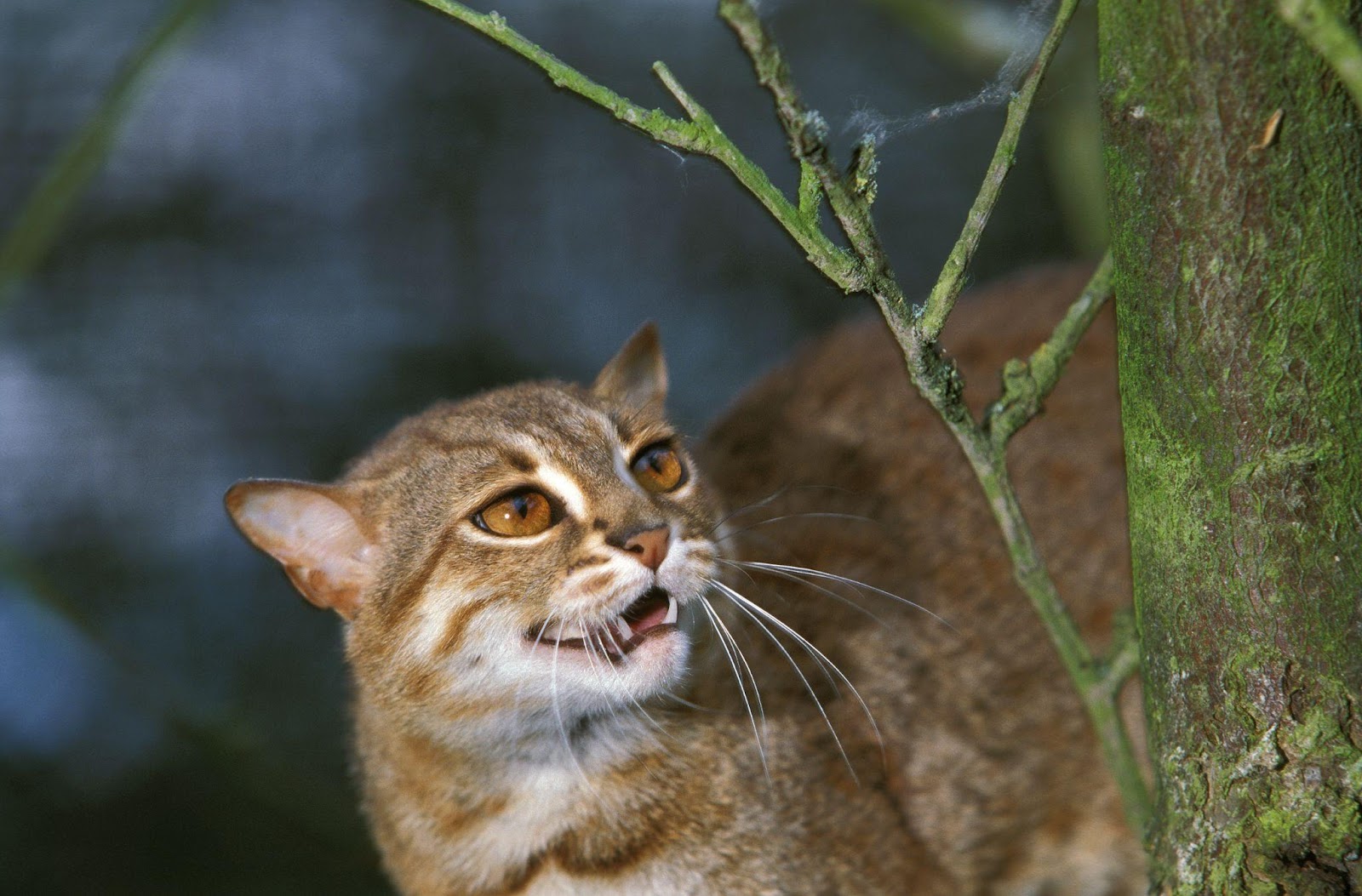
Living in southern India, Nepal, and Sri Lanka, the smallest wild cat in the entire world cannot be found anywhere else but there. It is the rusty-spotted cat. And its name is pretty expressive of how it looks like.
The rusty-spotted cat has reddish light brown fur with rusty brown spots on the back, four black lines over a pair of very intense espresso eyes, a white chin and throat, as well as gray paws and tail.
Maybe the picture above does not tell how small it is, but it really is small. A fully-grown rusty-spotted cat is 48 cm at maximum in length and weighs only 0.9 to 1.6 kg. This is even less than a quarter the weight of a familiar domestic cat. It also has a relatively long tail that ranges from 15 to 30 cm. So the cat’s tail is around half the length of its body!
Unlike the speckled tortoises which are active early in the morning, half the year-long, rusty-spotted cats are quite lazy, usually hiding in trees during the day. They rather prefer late afternoons, evenings, and nighttime to go out and look for food. They primarily feed on rodents such as mice as well as birds, lizards, and frogs. And just like Timon and Pumpa, rusty-spotted cats also eat insects.
On the other hand, and because it is very small, the rusty-spotted cat itself can be food to other predators such as jackals and foxes but it always tries to escape them by climbing trees thanks to its sharp claws. Unfortunately, such cats are occasionally killed as well by humans who exchange their precious light-brown fur for money.
Although humans are intelligent and intellectual and can use their brains to build rocks and go to the moon while rusty-spotted cats apparently cannot, those little creatures are more advanced and complicated than humans in many categories.
For example, rusty-spotted cats have a very strong sense of smell. They can recognize their home by scent so they easily go back to it after a night tour. Additionally, rusty-spotted cats have very sensitive and sharp eyes. They can see six times more accurately than humans do.
These strong senses protect the cats. They are able to recognize any movement of a predator approaching them and swiftly run away. Their ears as well are very sensitive. They help them scan the areas they go to and make sure whether or not it is secure.
Like all other cats, big and small, in the family, the rusty-spotted cat is quite fast. It can run at a speed of 80 km/h and sometimes faster than that. And they are very intelligent as well. However, rusty-spotted cats cannot be kept as pets because they are usually aggressive since they live in the wild.
The top three fastest animals on Earth
Unlike size, it can be hard to determine whether or not an animal is fast only by the sighting. But at least we know that a fast animal must have a fit body, strong muscles, relatively long legs, or strong wings. In the Animalia family, there are so many fast, even incredibly fast, animals. But the fastest of them all are miraculous.
Here are the top three fastest animals on Earth.
(4) Peregrine Falcon
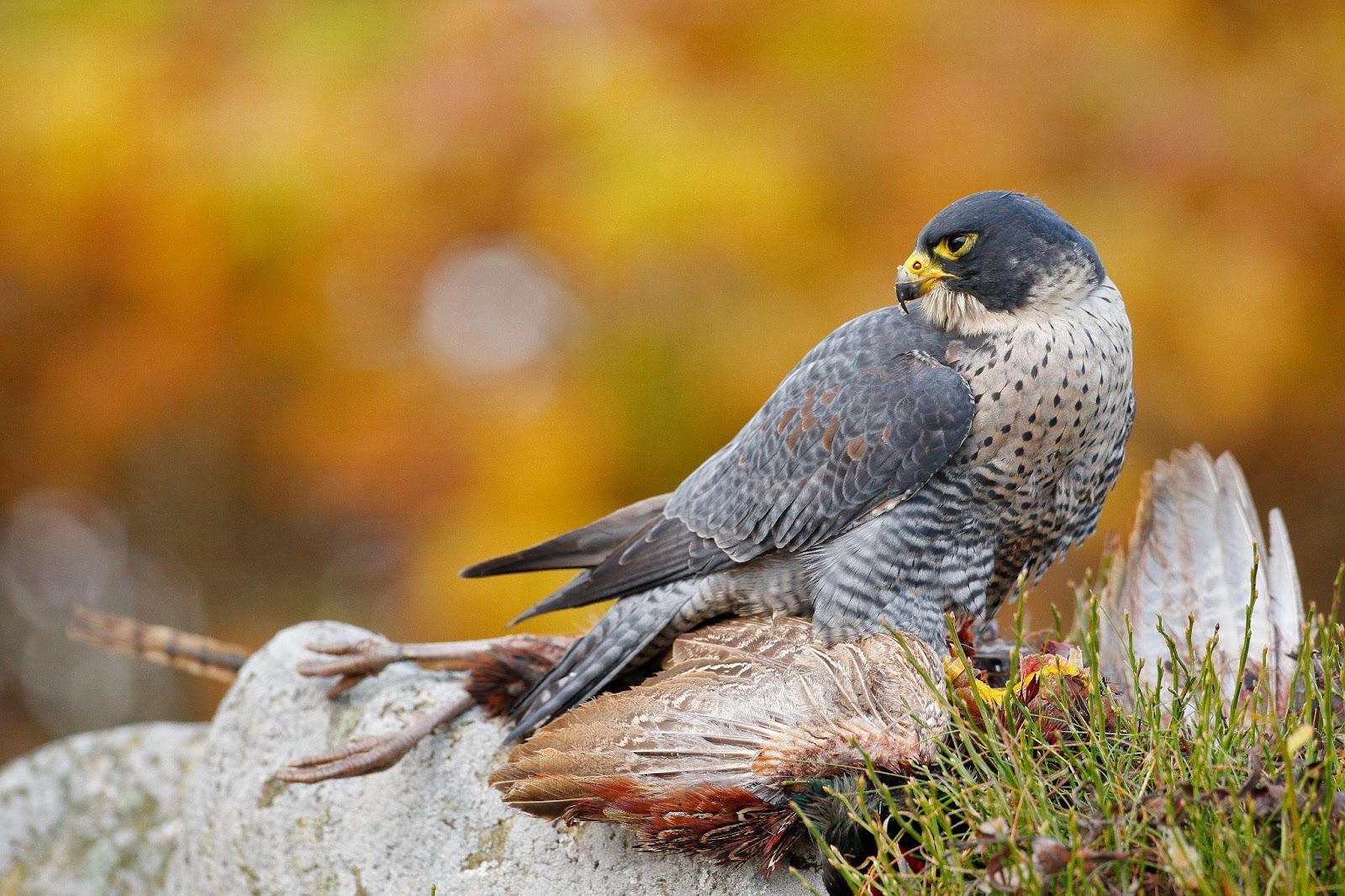
Though it used to be called duck hawk in North America, the peregrine falcon is nothing like a duck, except that it has a beak and feathery wings, of course. Peregrine falcons are the fastest not just in the Animalia kingdom, but in the entire world. They surpass every other creature whether on land or underwater.
A peregrine falcon flies so fast with a speed that reaches 390 km/h. While a car can take up to four hours to travel from London to Manchester, a peregrine falcon takes less than an hour to fly the same distance. How magnificent!
Despite its superpower, the peregrine falcon is small; only 34-58 cm in length. But the wings from tip to tip are even more than that. They measure 74 to 120 cm. This is called a wingspan. The weight of male peregrine falcons is 330 to 1000 g while females weigh 700 to 1500 g.
Regarding their appearance, peregrine falcons do comprise a combination of different colors. Their wings as well as their wingtips are black. They have underparts of white and light brown colors with small bands of dark brown or black. Their beak and claws are black but their cere which is the area around the beak is yellow. Their feet are yellow too.
Such birds eat other birds of medium sizes and they usually hold them using their strong large claws. But due to their relatively small size, peregrine falcons can themselves be eaten by bigger hawks and owls.
The peregrine falcon is not limited to a specific country; however, it can generally be found in river valleys, coastlines, and along with mountain ranges. In other words, peregrine falcons can potentially be found in any country with river valleys, coastlines, and mountains. That is why they are called global birds.
Their name pretty much tells about their nature. The word peregrine means ‘wandering’ and this breed of the falcon was given this name because they like to wander around, and even migrate long distances from one continent to another looking for better places to breed and raise their chicks.
Because they can adapt very easily to the new destinations they travel to, peregrine falcons can even be found in cities and live nearby humans. Besides being the fastest creature on the planet, peregrine falcons can also dive! They can go underwater to catch prey and it recorded a maximum diving speed of 180 km/h.
(5) Cheetah
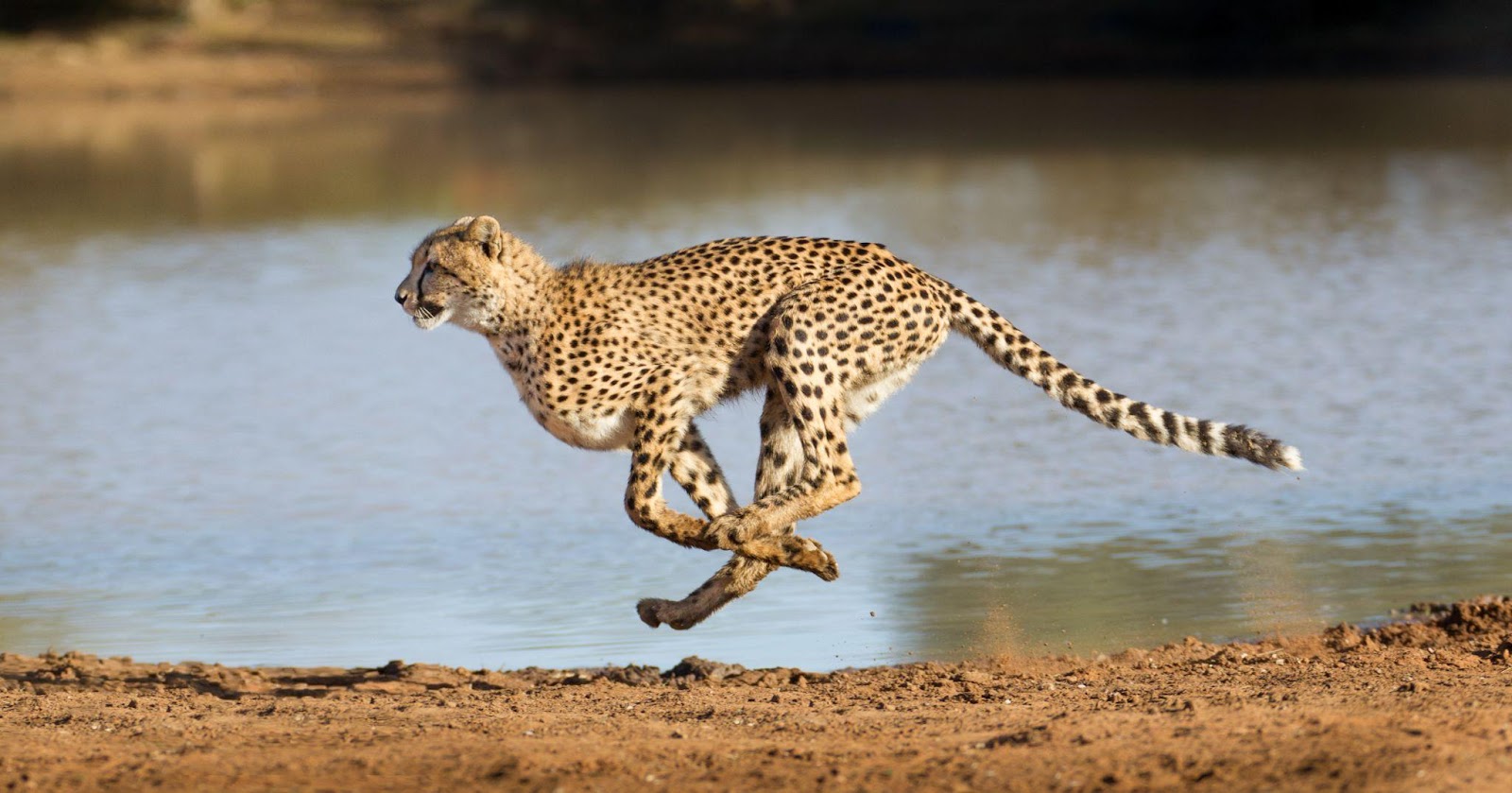
Cats, again. But this time with a big cat and the fastest of them all: the cheetah.
Cheetahs are the fastest land animal ever found on the planet. With the help of their very fit, extremely muscular body, and their very thin long legs, cheetahs’ running speeds range from 80-128 km/h. Cheetahs are native to Africa but can also be found in central Iran.
Appearance-wise, cheetahs are uniquely attractive. Adult cheetahs often weigh around 21 and 72 kg and are 1.1 to 1.5 m long. Their head is small and rounded. And they have two relatively small ears and two black facial lines that extend like a curve from the inner corner of the eye to their mouth. The eyes are light brown. They are very intense as they can spot prey from a distance.
A cheetah’s body is covered in creamy fur with black spots everywhere. It also has a noticeably long muscular tail which they use to stay balanced.
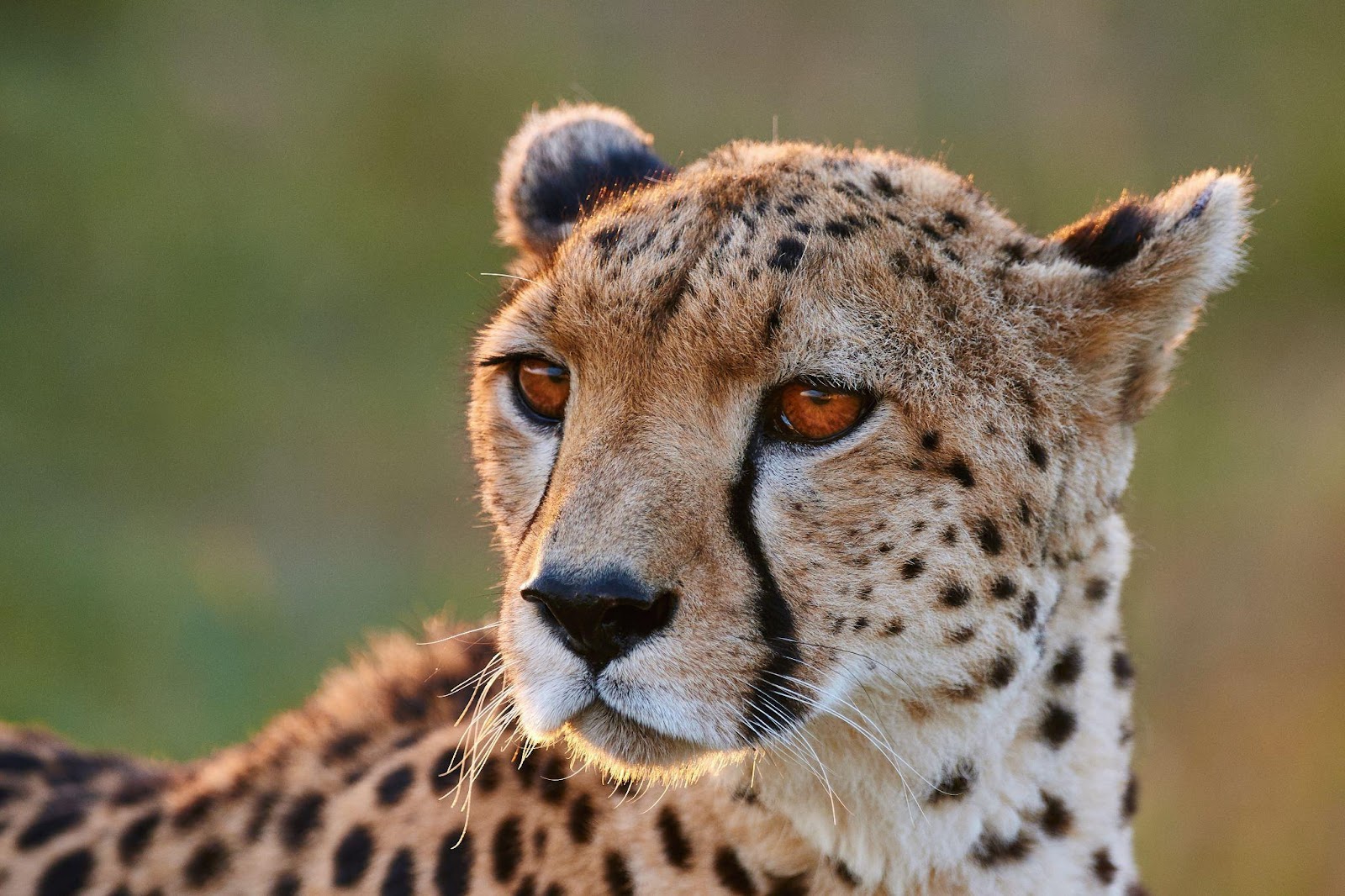
Male and female cheetahs have two different ways of living. While female cheetahs like to live alone when they are single or raising cubs, male cheetahs like to live in groups with their brothers, cousins, and other males. They team up to protect one another, defend their territory, hunt, take down, and eat prey together.
Female cheetahs can give birth to 2-8 cubs at a time. She keeps them hidden in the long grass to protect them from other predators. From the moment they are born and for two years, a cheetah mommy will take care of her cubs until they are old enough to go on with their lives.
Unlike the rusty-spotted cat which likes to hunt at night, cheetahs are highly active and like to hunt during the day. Apparently, they seem to hate hunting during the night to avoid conflicts with other big cats. If a cheetah hunts at night, lions and leopards often steal its food. So cheetahs hunt during the day when those enemies are inactive.
Although cheetahs are very powerful and always look prestigious, they, in fact, cannot roar. Interestingly, for a big cat to roar, it must have some special two-piece bones in the throat. Lions and tigers have those bones and they can roar. But cheetahs do not. On the other hand cheetahs purr if they feel relaxed and safe. And they meow too just like every other domestic cat.
(6) Sailfish
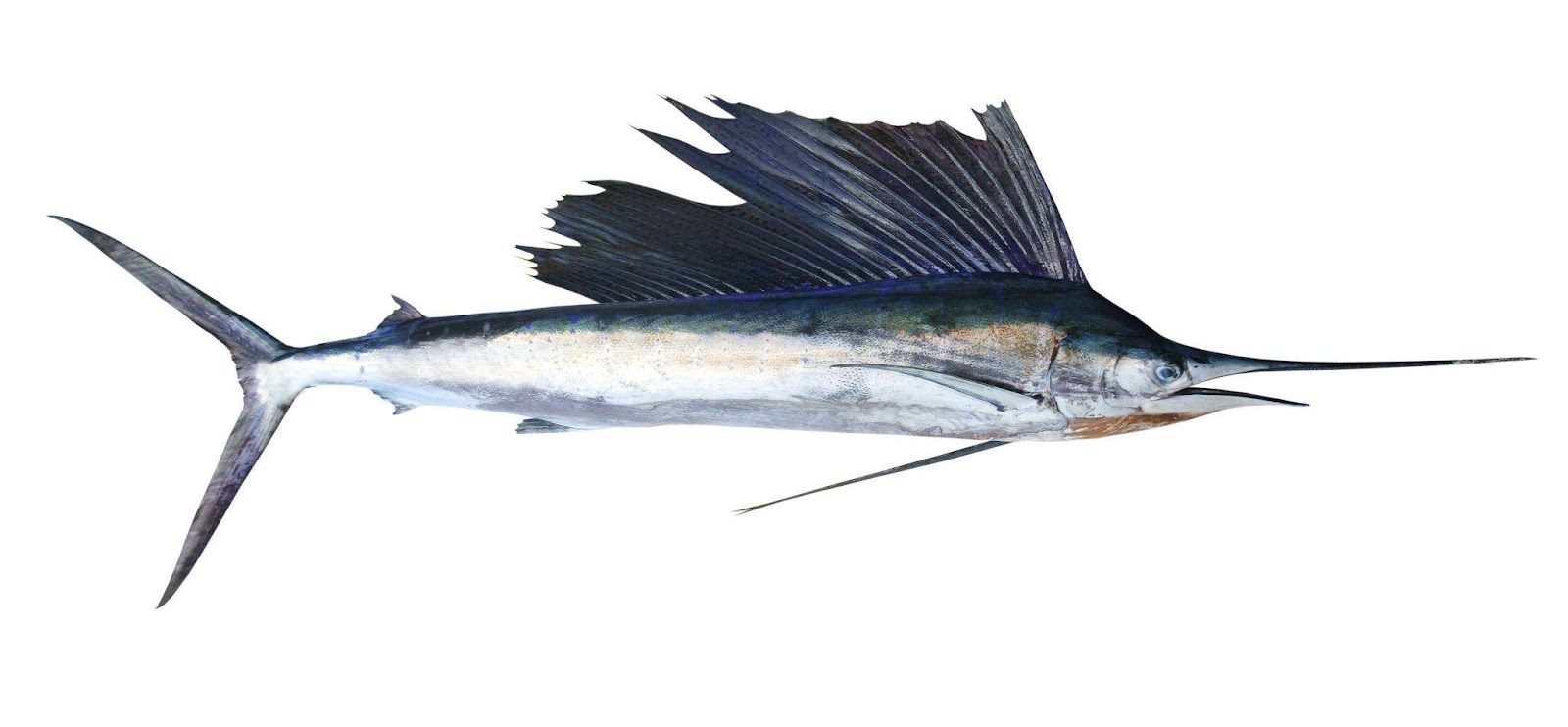
Considered by many scientists to be the fastest fish in the ocean, the sailfish is another wonder of Mother Nature. Its swimming speed reaches 109.4 km/h. It is fast growing as well. Although other fish such as salmon take up to seven years to grow to maturity, a sailfish grows from a baby to an adult fish in just one year. That being said, sailfish can live up to 15 years which is a lot of time compared with salmon’s 2-to-7-year lifespan. Sailfish can be found in the cold open water of every ocean on Earth.
Just like the other animals we have mentioned earlier, sailfish are incredibly powerful. An adult sailfish weighs around 90 kg and is 1.2-1.5 meters in length. Sometimes, they even grow to be three meters long. Such fish have a blue back and gray down parts.
One interesting fact about sailfish is that they can change their body color almost instantly. When they are hunting, their nervous system changes their blue color into yellow stripes to confuse their prey and catch it easily. Sailfish usually eat baitfish and squid.
Among its distinctive features, sailfish are characterized by their large dorsal fin or sail. This large dorsal fin is like that of a shark. It extends along the entire back of the sailfish. When it is attacking prey, the sailfish raises the sail; otherwise, it is always kept down. Another interesting feature of the sailfish is its bill which looks like the beak of birds. It is usually about 30 cm long.
When sailfish are as young as babies, especially after hatching, they can be in danger because other marine animals may feed on them. But when they become an adult, they are usually safe. However, if they happen to see a shark, orca, or a mahi mahi, they can be a potential food for them.
The top three cutest animals on Earth
Size and speed can be easily measured. That is why it was not a hard job to determine the smallest animals and the fastest ones. Everybody would agree that the peregrine falcon is the fastest creature. However, when it comes to beauty and cuteness, many people might disagree. That is because beauty is such a relative thing. What you find cute might not be the case for your friend.
That being said, we have tried to list some of the cutest animals on Earth that most people would agree on and we hope you would too. Here they are.
(7) Sea Otter
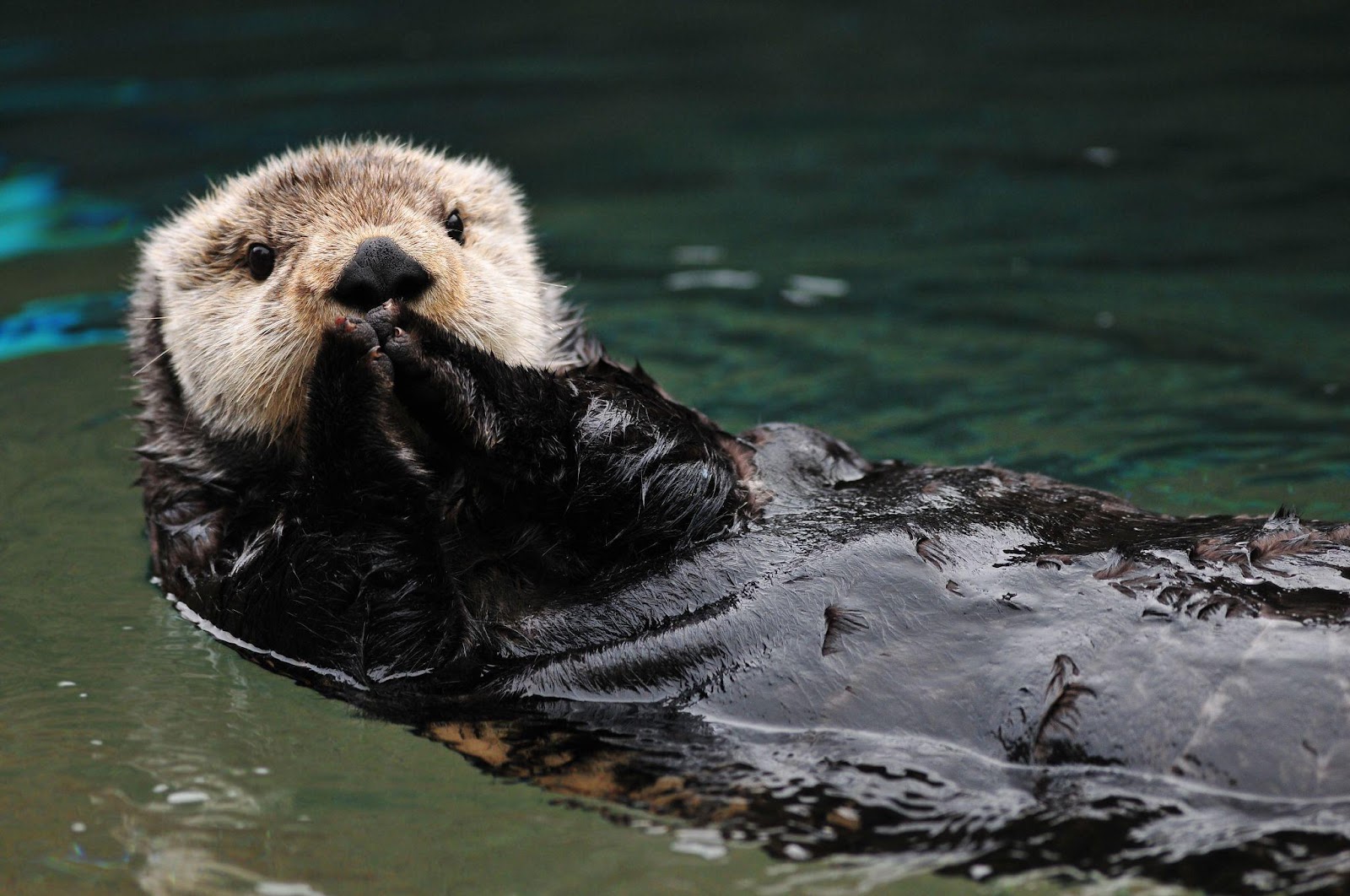
While many people may think that cats can be on top of the cutest animals list, there is a larger animal that beats them in the cuteness category and that is the sea otter. Sea otters usually live off the northern and eastern coasts of the Northern Pacific ocean. They can grow to a weight of 13-45 kg as adults and about 61-182 cm in length. Their bodies are covered with thick fur which protects them and helps preserve their body temperature.
Sea otters cannot just live in the ocean; they can walk on land; however, they mostly prefer to stay in the water. And they seem to have a diet of many many varieties of food. For example, sea otters can eat octopuses, snails, shells, crabs, lobsters, sea stars, squid, shrimps, and many different other types of fish.
To help them eat, sea otters use their very sensitive whiskers to find prey residing on the sandy floor of the ocean. They are also very intelligent because they can use tools to do certain jobs. For example, they use rocks to knock shells open. They also use rocks to hit their prey and stop them from resisting and moving. Sea otters also like fish that humans eat, so that leads to a disagreement between sea otters and the fishermen who happen to be in the area fishing.
What is interesting about sea otters is that every individual of them has a different food preference. For instance, one sea otter might like snails and crabs while another likes shrimps more.
When sea otters are five years old, they can get married and have children. When a baby otter is born, it is usually called a pup! Sometimes it is referred to as kittens as well. A sea otter mom would always keep her baby on her stomach while she floats on her back.
Do you remember which animals of the ones we discussed so far like mornings? Well, sea otters are just like them; they are morning animals. They wake up very early, usually an hour before dawn to go look for food. They continue searching and eating until noon. Then they take a rest for a few hours before they continue hunting and eating until before sunset. Once again around midnight, sea otters search for food.
Sea otters, just like humans, have three meals a day.
The time between meals is usually spent resting, floating on the water, and taking care of themselves. This is what really makes sea otters cute. They can be seen every day cleaning their fur, untangling its knots, rubbing it to squeeze out water, and allowing air to blow into it. Sea otters also hate it when any small leftover pieces of food fall on and stick to their fur. So they roll in the water while they are eating to get rid of any food scraps stuck to their beautiful fur.
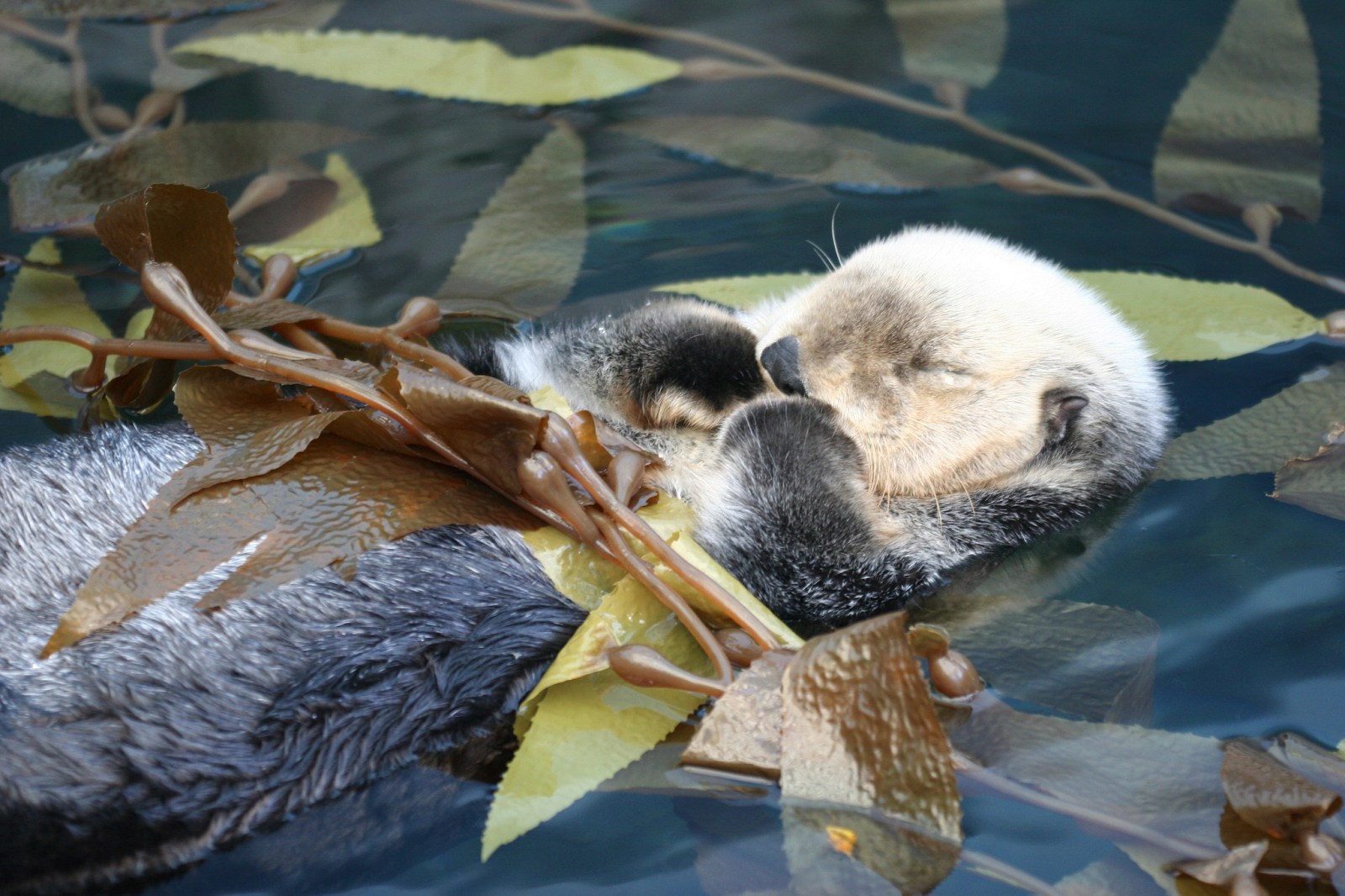
During rest and naptime, those cute marine creatures stay in groups of 10 to 100 animals. Such groups are called rafts. Rafts are usually either male-only or female-only. There is no raft of mixed otters. Sometimes, when they eat and sleep, sea otters wrap themselves in a sea plant called kelp to help stop themselves from drifting away in the ocean.
(8) Panda Bear
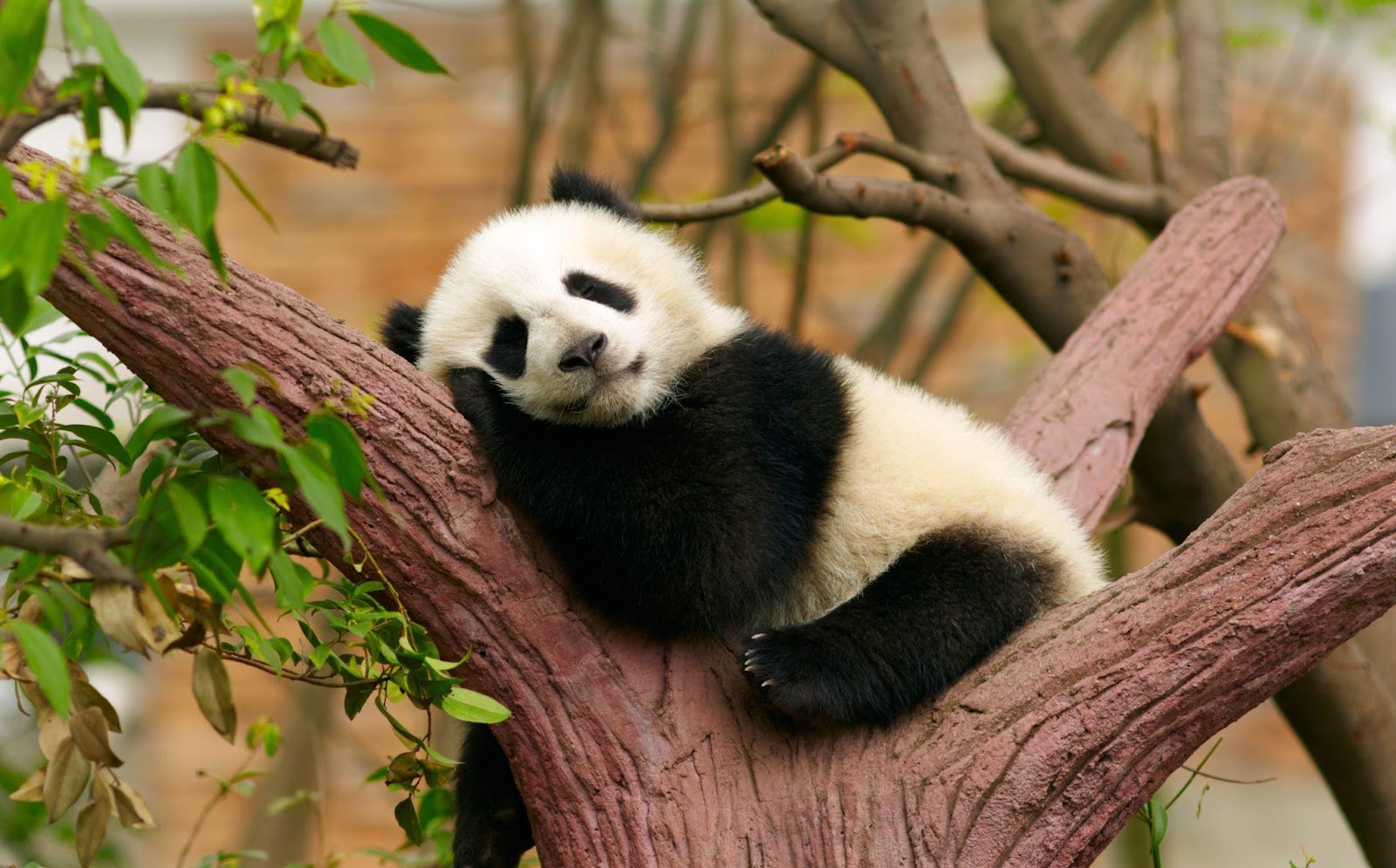
The second cutest animal we have is the panda bear. Pandas are more common among people and cultures than sea otters. These incredibly cute bears are large and covered in fur with a beautifully distributed mix of black and white. Ears, eye circles, four feet, and shoulders are black while the rest of the panda’s body is white. Pandas’ paws have six fingers. Well, five fingers and one thumb to help the panda hold food while eating.
Adult pandas are usually between 1.2 and 1.9 cm in length. And they are heavy, really heavy. One adult male can weigh up to 160 kg while female pandas’ weight ranges from 70 to 125 kg. Pandas are found in China only and they usually live for about 18-20 years. When taken care of by people, pandas can sometimes live up to 30 years.
Though pandas have noticeably good skills, they barely use them. For example, pandas are bears which means they can eat meat that will give them protein and the necessary nutrients and energy to live. But pandas do not eat meat. Instead, they eat bamboo all the time. 10-16 hours of the pandas’ day is spent eating.
Bamboo is a green woody grass that is very hard to chew. It gives very little energy to pandas and very small amounts of protein. So to compensate and to get the energy required to walk and live, pandas eat incredibly large amounts of bamboo every day. In fact, they eat 9-14 kgs of bamboo per day.
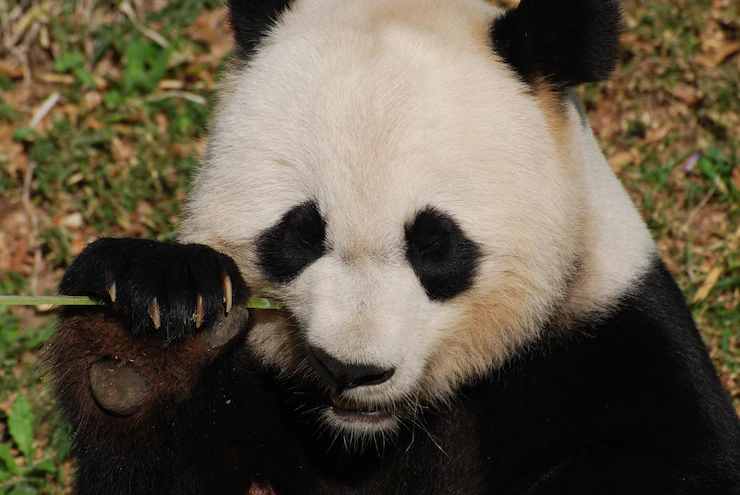
Secondly, pandas can run at a speed of 32 km/h but again, they do not do that. In fact, they do not even walk! Pandas like to stay in one place most of the time, eating bamboo. This way, they do not spend much of their energy which is very limited, to begin with.
But if pandas, for some reason, have to move from one place to another, they walk very very slowly. If a person can take five seconds to walk 15 meters, pandas take an hour!
When pandas are not eating, they will be asleep. This is because every physical activity will take energy that pandas do not have much of. So they like to sleep to preserve that energy. They also like to climb trees and sleep on branches.
Unlike male cheetahs and sea otters, pandas like to live alone. Even after they get married, they separate and the female panda is the one who takes care of the babies, who are called cubs. Though pandas are very big, their babies are very small, even smaller than a newborn puppy.
Normally, a panda mommy has one baby at a time but if she had twins, she might choose the strongest of them to feed and leave the other weak one to die. This is because she cannot feed two babies at the same time as she has limited energy.
However, when pandas are kept in zoos, people often take care of the panda mother and help her feed both cubs. This allows them to live.
(9) Bottlenose Dolphin
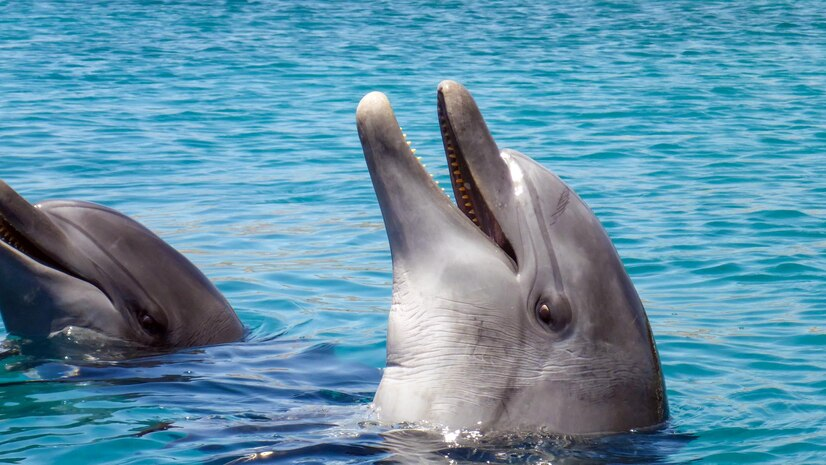
Another animal that many people would agree is very cute is the bottlenose dolphin. Bottlenose dolphins are very intelligent as well. Normally, they can reach a length of 4 meters and their weight ranges between 150 and 650 kgs.
Male dolphins can live up to 40 years but females live longer, about 45 to 50 years and sometimes even 60 years. One interesting movement of bottlenose dolphins is jumping out of the water into the air. They can in fact jump up to six meters high. Bottlenose dolphins have dark gray backs and light gray underparts. Older dolphins sometimes have some spots on their backs.
Dolphins feed on fish, shrimps, and squids.
One thing that is interesting about dolphins is that they are quite unlike all other fish. Instead of having gills to breathe, bottlenose dolphins have lungs, just like us. And since we have noses to breathe in the air, dolphins have a blowhole on their back.
In order to breathe, dolphins must go to the surface of the water, open their blowhole, and get air. They do this two to three times per minute. However, they can also take a deep breath, store the oxygen in their bodies, and stay underwater for longer periods sometimes reaching 20 minutes.
But how can dolphins breathe during sleep? While we can breathe normally during sleep, dolphins need to keep their brain awake to take care of that. One part of the dolphins’ brain will shut down, and stop working, and the other will stay awake to help the dolphins stay near the surface, pushing their heads out of the water to breathe properly. This is called dolphin logging. Besides, dolphins can sleep while swimming slowly.
Searching for food is a whole new level of uniqueness. Dolphins have a special way to search for food which works exactly like an echo. They emit sound waves into the ocean. When these waves hit something such as a fish or rock, it goes back to the dolphin as an echo. This echo tells the dolphin a lot of information about the body it hit such as its shape, distance, speed if it is moving, size, and location. Dolphins can hear this echo using two small ears they have behind their eyes.
Dolphins communicate using sounds, whistles, and even body language such as jumping out of the water and slapping their tail on the surface of the water.
Despite this great sense to localize fish under the water, dolphins, unfortunately, smell very poorly. This is because the blowhole which they use to breathe is usually closed when they are in the water.
Conclusion
No matter how tiny or big an animal is, it sure is extraordinary one way or another. Is it the size? The body structure? How fast they run? How much they eat? Or how they like to live? It does not matter. Animals are phenomenal. And they live in communities just like us.
In this journey, we learned some interesting information about the smallest animals on the planet, from the bee hummingbird to the rusty-spotted cat. We also learned that cheetahs are not the fastest creature but the peregrine falcon is, which can travel at a speed of 390 km/h.
Then we talked about some cute animals. And while there are hundreds of them out there, we choose three that most people would agree on their adorable cuteness. But maybe you have a different opinion. So why don’t you share it with us in the comments?


Leave a Reply